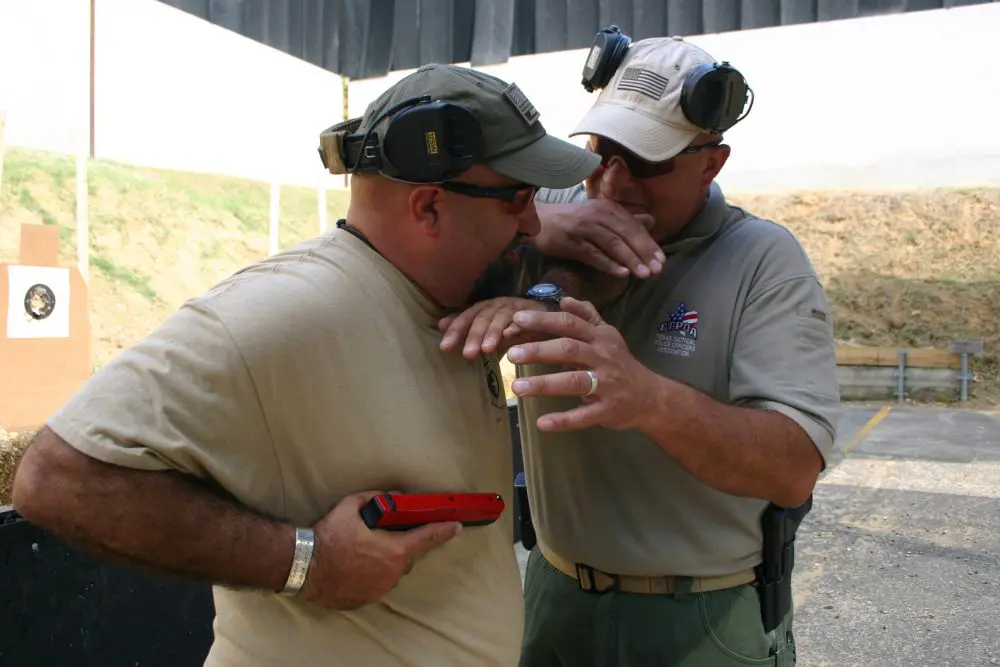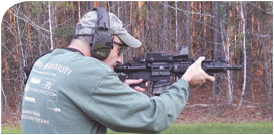
When a tactical training entity endures for 25 years in the industry, it is a remarkable feat. That is exactly the legacy of Direct Action Group based in southern California.
When the company was formed, there were only a handful of privately owned training firms in the country. Mid-South, Gunsite, and Tactical Firearms Training Team/Direct Action Group (TFTT/DAG) were among that group. Max Joseph, who was recruited from USMC Recon into a large-scale dignitary protection team operating in Beverly Hills, founded TFTT/DAG.
The company originated as two entities within the same firm. TFTT was focused on civilian training, while DAG had military and law enforcement clientele.
Operations initially were out of the Sacramento area, but for the past 15 years, they have worked primarily out of Orange County, California. They continue to run courses out of Sacramento and at satellite facilities in Wisconsin, Illinois, and Texas. In 2015 both sides of the company were consolidated into Direct Action Group.
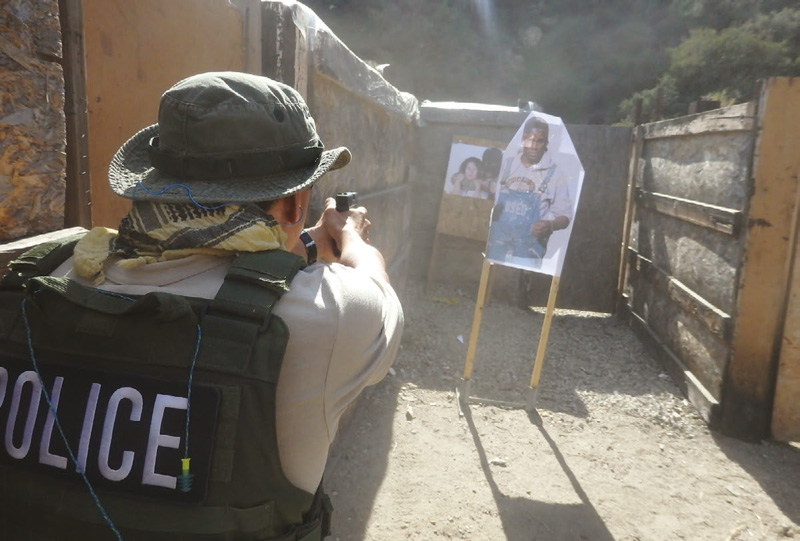
Table of Contents
COMBAT ARTS SEMINAR
The Combat Arts Seminar parallels the foundation and growth of DAG. As part of their dignitary protection duties, Max Joseph and Alan Brosnan were tasked with firearms training for the team. That led to participating in competitive combat shooting events, where they networked with other professionals.
The Combat Arts Seminar evolved from that single day experience and has become a favorite event of military, law enforcement, and private sector clientele over the past two and a half decades. Each year it consists of multiple halfday blocks of instruction from DAG cadre and select guest instructors.
The syllabus presented has varied over the event’s history but has typically provided a sampling of the firm’s core courses. Add-on classes over the years have ranged from knife defense to tracking. Regardless of the year, all training has been hands-on and practical-skill based.
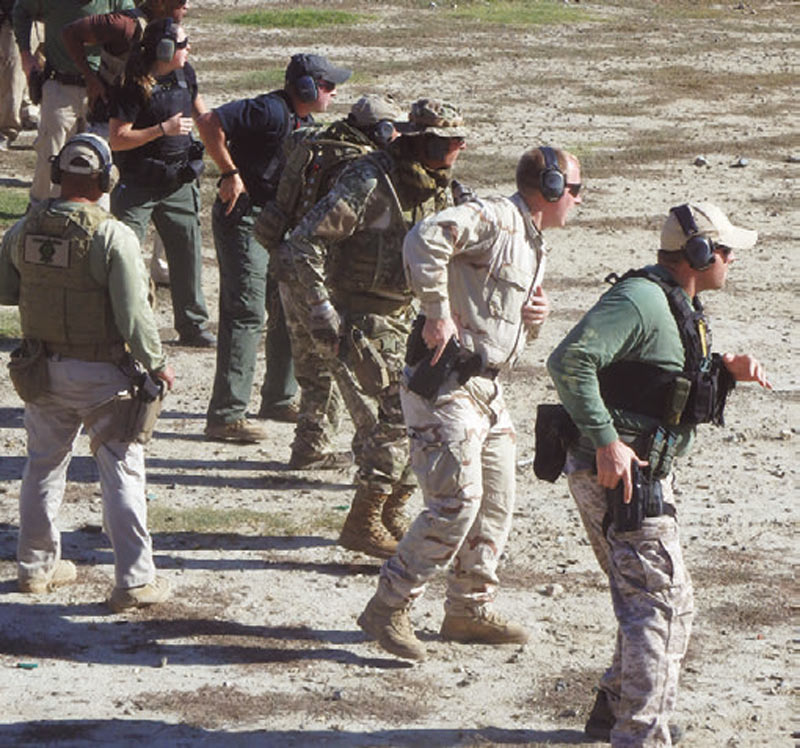
DAY ONE
The latest seminar was no exception, offering a sampling of integral subject matter. On Training Day One, attendees were greeted with opening remarks and an orientation briefing from Max.
Being the 25th anniversary, this seminar had a unique vibe. In many ways it seemed like a reunion. Some of the people in attendance had been students for over 20 years. Many others had a decade or more experience with TFTT/ DAG. Almost all had taken multiple courses.
There were a lot of handshakes and back slaps prior to the start of activities, as many “old hands” greeted each other. When asked who were first-time attendees, a few hands went up. Every one of the “newbies” had enrolled on the recommendation of a previous graduate.
After a period of preliminary instruction, attendees were divided into groups. Each group went with a different instructor for a unique range session. On signal, groups rotated to a new block of instruction until all groups had been to every range station. These preliminary sessions set the marksmanship and safety standards. The midday start time facilitated low-light training evolutions. Max conducted shoot-house operations as a prelude session to train up on two-man tactics before dark. After dark, each group worked in the shoot house as one of the evolutions.

Another station, instructed by John Taylor, involved vehicle deployment drills in low-light shooting from and in proximity to vehicles. At that range, a combination of artificial light sources was used, including weaponlights and emergency vehicle lights.
The third range was run by instructor Tim Scarrott, with students using a variety of flashlight and weaponlight techniques. For an added distraction, Tim used highway flares during portions of the courses of fire.
DAY TWO
Training Day Two featured several high-speed training blocks. The first block consisted of two distinct “shoot and scoot’” combat pistol courses set up on separate range bays. The first used conventional barricades, while the other used natural forms of cover or concealment.
Another block of instruction covered Close Quarter Pistol tactics with curriculum derived from SWAT training courses. The techniques presented allowed shooters to engage targets with maximum effect at close range in quick time.
Employing the shoot house, trainees worked on active shooter response tactics. By utilizing two entry points and two instructors, training flowed efficiently and safely.



DAY THREE
Events on Training Day Three were equally challenging and diverse. Alan Brosnan and Murray Marks taught an in-depth session on dignitary protection tasks. Attendees performed exercises that simulated an attack on the principal as well as anti-ambush drills simulating an attack on a convoy. (I was the VIP on several of these drills, and the students did an exceptional job of quickly getting me off the X and into a waiting vehicle.)
Joel Bateman presented a range session on barricade shooting with a unique perspective. Not only did students use cover, they also engaged targets behind cover. Part of this session included shooting through automobile glass to show bullet deflection.
James “Doc” Kreter provided training on casualty care from a tactical perspective. Doc is a surgeon and retired U.S. Army Major.
WHO ATTENDED AND WHY?
The student base was diverse, as were their reasons for attending. One private citizen is a long-time participant from Canada who makes the trek to DAG courses several times a year. Another was a rookie female police officer who heard about DAG from a colleague and wants to improve her firearms skills. A group of officers from San Francisco PD attend on a regular basis to bring techniques back to their trainers. Federal agents, military, and an officer from Hawaii attended. A trio of former Brazilian officers now living in the U.S. traveled from Florida. One long-time attendee is a physician who was a paramedic when he started training with Max.
Student groups were arranged at random. Where else can you rub shoulders with such an eclectic firing line?
The rationale for attending this and other DAG courses was equally varied. For many, it presents training opportunities or topics they cannot get at home. Some ranges or rangemasters won’t allow tactical movement or night firing.

Some students say the format of the seminar allows them to refresh skills from courses they took years ago. A few considered the event a vacation. All in all, the magnitude of instruction was an essential factor.
The timing of events during the seminar is in many ways like all DAG courses—fast paced with no down time. This helps everyone maintain focus.
For example, the Day Two schedule had three topic-specific training modules: close quarters shooting, a two-phase combat course at separate range bays, and active shooter exercises in the shoot house. Each module lasted approximately 2.5 hours, with 15 minutes in between to move to the next and replenish ammo. Even though it was a hectic pace, the organization showed how much training could be presented to that many people in a short time frame.
BANQUET
Another highlight of the seminar has been the closing day banquet with guest speaker. This year was atypical, with Max Joseph taking center stage in a rare PowerPoint presentation that highlighted his family, personal career, and development of DAG. The slide show displayed rare vintage photos of his personal experiences.
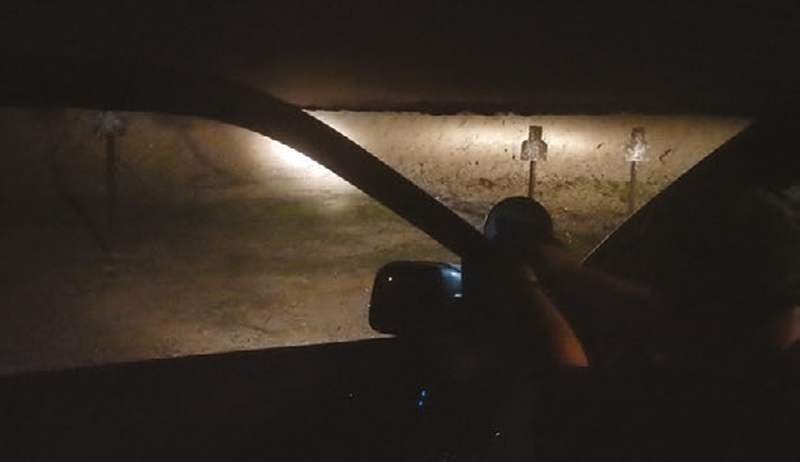
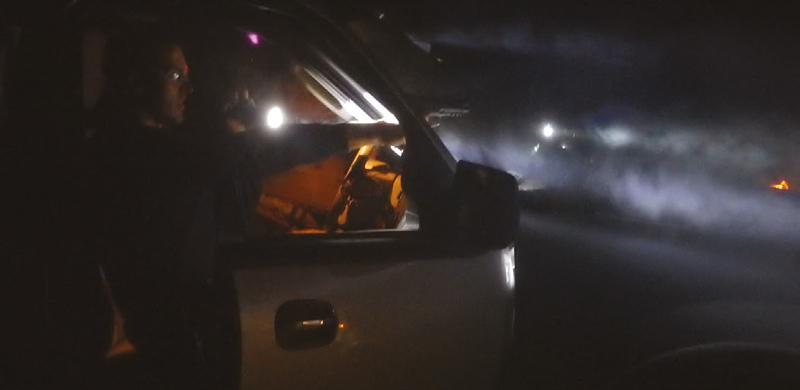
Next, Alan Brosnan took the stage with his own presentation underscoring his involvement with DAG, which included entertaining operational stories.
The Brazilian students played a video from one of their country’s largest police agencies thanking Max for his contributions to the betterment of police training and presented him a commemorative flag.
Over the past several years, Direct Action Group has partnered with Maxpedition, Edge Tactical Eyewear, and ASP. Maxpedition has used DAG cadre and courses in their promotional photo shoots. The relationship involves real-time use and assessment of the products rather than a paid promotion. These firms donated products for a raffle, and each attendee walked away with a gift.
FUTURE PLANS
How long will Direct Action Group continue? According to Max, as long as needed. When asked if someone with his skills would be better off overseas in the fight, Max responded that his job is passing those skills on to the Marines, soldiers, and police officers going into harm’s way. Think of it as a force multiplier by increasing the efficiency and effectiveness of those personnel protecting our country on foreign and domestic soil.
Throughout the firm’s existence, a major focus has been on the quality and continuity of training. Only a handful of instructors have worked for TFTT/ DAG during its history. All were hand selected and vetted not only for their expertise but also their ability to teach effectively, to ensure that students graduating months or miles apart come away with the same skill sets.
This is important for multi-tiered subject-matter courses where students are expected to possess certain abilities in order to progress to the next level. That is not to say the curriculum is stagnant. Programs of instruction are updated as new information comes back from the field and is validated.
Want to attend a DAG course, but you’re not military or law enforcement? No worries. DAG offers several course tracks to select private-citizen applicants. Pistol courses are presented in progressive levels, where the next block builds on the curriculum of the previous block. Carbine and shotgun courses are also available.
Training can be customized for groups or agencies, and may be conducted at a host facility. Course dates are currently posted on their website. If you can make it, plans for the 2017 Combat Arts Seminar are underway.
Two and a half decades in the training arena equate to a depth of knowledge that can accommodate a range of student variables. For many years, DAG used the maxim “Building Complete Operators.” That statement speaks to their dedication to sustain the highest standards. Regardless of the course topic, the instructors adhere to that philosophy. When you graduate from a DAG course, you have earned the certificate.
Congratulations to Max and his crew on their permanence in the tactical training arena.


